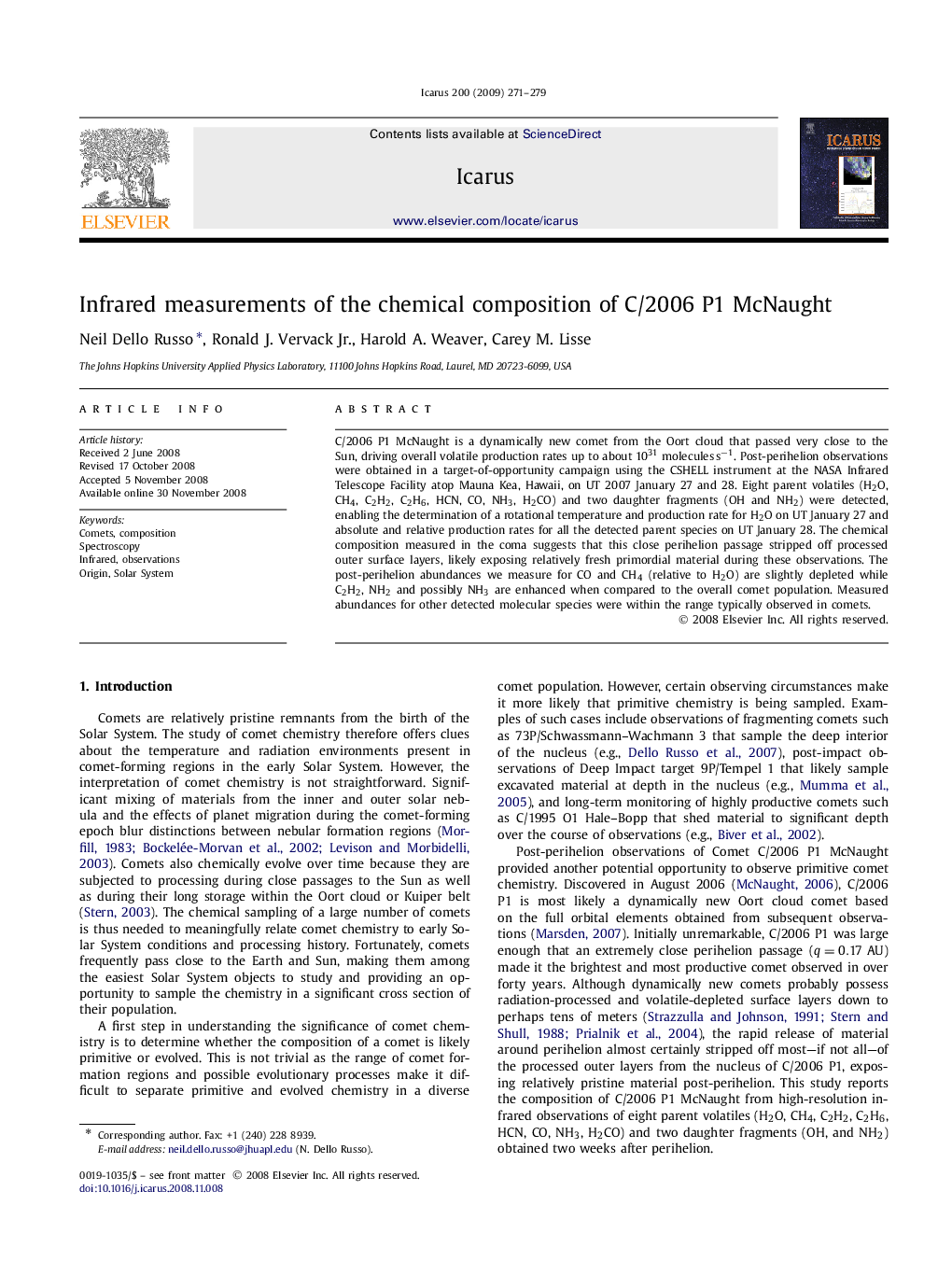| Article ID | Journal | Published Year | Pages | File Type |
|---|---|---|---|---|
| 1774822 | Icarus | 2009 | 9 Pages |
Abstract
C/2006 P1 McNaught is a dynamically new comet from the Oort cloud that passed very close to the Sun, driving overall volatile production rates up to about 1031 moleculesâsâ1. Post-perihelion observations were obtained in a target-of-opportunity campaign using the CSHELL instrument at the NASA Infrared Telescope Facility atop Mauna Kea, Hawaii, on UT 2007 January 27 and 28. Eight parent volatiles (H2O, CH4, C2H2, C2H6, HCN, CO, NH3, H2CO) and two daughter fragments (OH and NH2) were detected, enabling the determination of a rotational temperature and production rate for H2O on UT January 27 and absolute and relative production rates for all the detected parent species on UT January 28. The chemical composition measured in the coma suggests that this close perihelion passage stripped off processed outer surface layers, likely exposing relatively fresh primordial material during these observations. The post-perihelion abundances we measure for CO and CH4 (relative to H2O) are slightly depleted while C2H2, NH2 and possibly NH3 are enhanced when compared to the overall comet population. Measured abundances for other detected molecular species were within the range typically observed in comets.
Related Topics
Physical Sciences and Engineering
Earth and Planetary Sciences
Space and Planetary Science
Authors
Neil Dello Russo, Ronald J. Jr., Harold A. Weaver, Carey M. Lisse,
